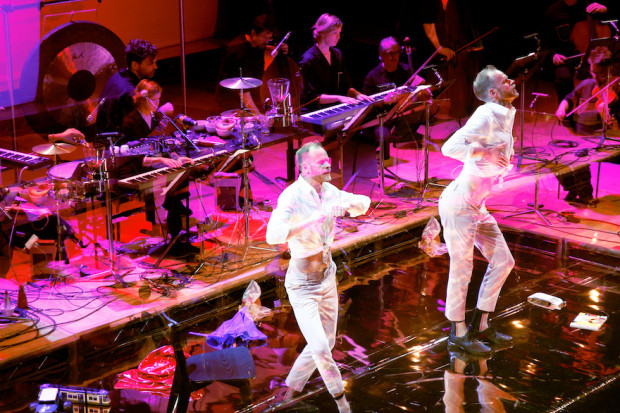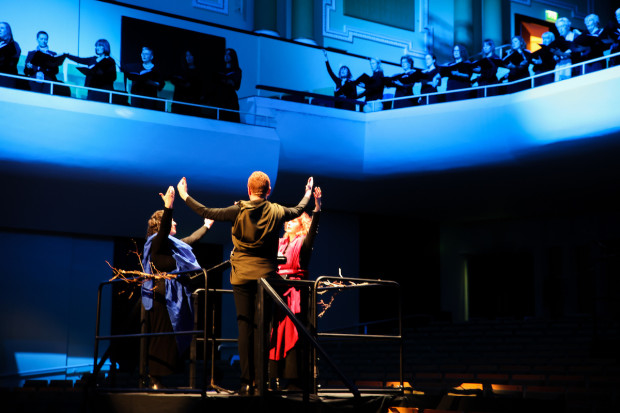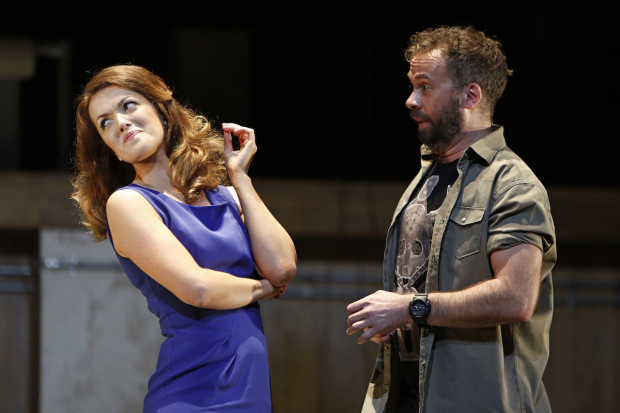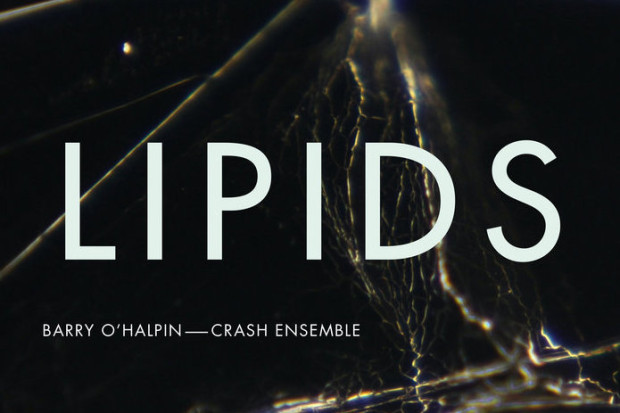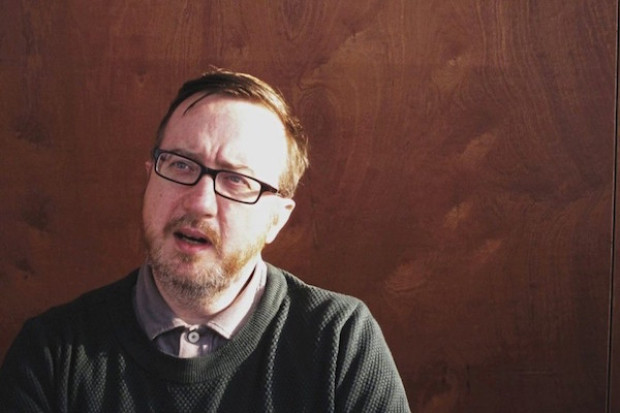Crash and Bang...
Crash Ensemble
After the Crash Ensemble was founded in 1997, it very quickly gathered a loyal following. At the early concerts, there were striking numbers of young people whose CD collections would certainly range well outside the classical sphere. With the blacking out of the theatre between pieces and the musicians’ informal dress-style, the atmosphere was more gig than concert. Amplification, the relative novelty of the electronic and audio-visual elements, and a leaning towards music with a strong rhythmic drive – all this made for immediate impact.
2003 Festival
Last year, Crash offered a festival centred on new music from the Nordic countries and Ireland. The idea of exchange was built into the programme, with Irish musicians playing Nordic pieces and vice versa. This year’s festival, spread over four days, welcomed musicians and composers associated with New York’s Bang on a Can or influenced by that group.
Bang on a Can
In conversation with Donnacha Dennehy, composer Michael Gordon said that the new music scene in New York in the mid-80s was dead. Teachers seemed to accept that the music would attract no public; the structures were those set up to support eighteenth- or nineteenth-century music. Bang on a Can was a kind of experiment to see if the music could be presented differently, as a potentially enjoyable experience.
September 11
Decasia, with its dense textures, its loudness, its shrieking glissandi and its deliberately dissonant tuning system hovering on the edge of harmony, might have been written in response to the event but was in fact completed a month before. Gordon lived about half a mile from the WTC; his daughter’s school was only two blocks away. After months of stunned silence, he found himself writing not the distraught reaction that might be expected but music as joyous as he could find within himself.
Music Theatre
Crash presented the opening concert. Andrew Hamilton’s I Like Things was a commissioned work. The singer, Natasha Lohan, stood or wobbled on, stepped forward and back along, a bright strip of light while singing a dramatic text that suggested a person cracking under pressure. The other performers too were asked to sing and change position. Convincing at first, the piece seemed to lose impetus once the central elements had been defined. Justin Carroll’s Helicopter Duo – for two fixed speakers and two swung on ropes by the performers – was more limited in range but also more concise.
Junk Box Fraud
Donnacha Dennehy’s own piece makes imaginative use of electronics, voice, noise, video and rhythm. His best work seems freer and more inherently exuberant than many of the products of the Bang on a Can school. There is a sense of discovery, of revelling in musical space and pulse, behind this and other pieces. It will be interesting to see whether his curiosity and drive take him further along the path of discovery in the coming years and whether he takes Crash with him.
Van Gogh
Michael Gordon’s opera totally avoided the temptations of mawkishness or overstatement on the one hand and irony on the other. This left us with a strangely neutral experience. As the singers were given so little of interest to do, the mind tended to wander away into independent, non-musical reflection on the libretto, which was composed of quite affecting extracts from Vincent’s letters to his brother Theo.
Our Musical Heritage
Harry Partch, the reclusive composer and inventor both of instruments and of tuning systems, spent some time late in life at Champaign-Illinois, where for four years Donnacha Dennehy had the use of the same green chair.
Questions and Answers
Robert Black, a double bass-player with an impressively broad range of activities, was interviewed by Willie White. What makes musicians different from the rest of us is the way they make music. Black was a fluent and pleasant interviewee, but the interviewer seemed intent on engaging in essayistic conversation about technology, community and communications in the post-modern world – which might have been stimulating if he’d been talking to Zygmunt Bauman or [insert your favourite pomo intellectual]. Black was being asked to define himself, Bang on a Can, the age; beyond answering that you are the sum of your activities, there was little that Black could offer. More interesting lines of questioning went a-begging.
Separate worlds?
If Bang on a Can’s New York ever touched the world of downtown jazz and improvised music, from John Zorn to William Parker, the topic did not arise here. And as Black’s biog mentions a collaboration with Cecil Taylor (the pianist who has shown extraordinary integrity in his decades-long exploration of structured improvisation, both solo and in ensemble), this rare intersection deserved exploration.
Conlon Nancarrow dixit
Living in exile in Mexico, the composer subscribed to new music magazines but rarely heard the music. ‘As far as I am concerned, you can more or less just read about minimalism and know what they’re doing. You don’t really have to hear it, I think,’ he said in the 70s. (Talking Music, William Duckworth; Schirmer Books, New York, 1995.)
Minimalism
The music of Reich and Glass seems to slide gritlessly past this pair of ears; other forms of minute sonic exploration do not (AMM, for example, or the school of low-volume improvisation to which the harpist Rhodri Davies, a recent visitor to Dublin, belongs). Beyond opening your ears and trying again every few years, there is nothing to be done about some matters of taste. The 75-minute contiuous double-bass piece created and performed by Black to Hanne Darboven’s instructions was impressive for the steadiness and concentration of the player. It was hypnotic to some; not to others. The Tenney piece played earlier that night by the Quatuor Bozzini held the attention more as the other players approached and moved away from the continuous, minutely varying note of the violin.
Frederic Rzewski
When Lisa Moore, the Australian pianist associated with Bang on a Can, was interviewed by John Godfrey, what came across was her commitment to clarity and to strict definition of rhythm. She spoke with a touch of exasperation about musicians who see not keeping time as a way of expressing themselves. Her own recital focused on the work of Frederic Rzewski, who was connected with both the European and the American 1960s avantgarde. The highly politicised Rzewski’s Four North American Ballads (1992) elaborated a complex collage of improvised-sounding variations from folk and political song material. De Profundis (drawing on Wilde’s famous letter and, in theory, written for a gay performer) received an authoritative performance, but was there almost too much clarity for a work that calls from the depths?
Australia
Moore spoke of her own almost accidental involvement in new music and of the growth of that music in post-Second World War Australia – after a century of pale imitation of earlier European models. Exposure to the conditions of growth of cultural self-confidence in other countries might save some Irish musical academics unnecessary self-torture and embarrassment at this country’s record in classical composition.
Special Reassuring Message to X
Please note that there has been no mention of Mats Gustafsson in these pages.
Sound and image
Bill Morrison’s decaying fragments of old film stock were supposed to accompany Michael Gordon’s music in Decasia. But after a time the music seemed to become an over-intense and monotonous accompaniment to the fleeting, disintegrating images, until they too began to pall. In contrast, Six, a Jürgen Simpson/Simon Doyle piece for video, percussion, live electronics and tape, displayed a well-judged balance between the evolving elements: the video going from what looked like abstract patterning to a recognisable image; the electronics building up an increasingly dense weave of sound, punctuated by the confident rap and roll of the percussion (Richard Benjafield).
Maternity hospital
Gerald Barry’s String Quartet No. 2 (1998) was endlessly busy in detail but austere in effect – and unyielding on first hearing. After this premiere from the Bozzini quartet, will we have a second hearing from one of our quartets? Tim Brady’s Sauciehall Street, featuring his own guitar-playing, made some impression, unlike Matthew Rizzuto’s yeah, see, me, i dunno. In Judith Ring’s phorM, Andre Leroux’s saxophone seemed tentative at first in relation to the tape, before coming into its own in such a way as to suggest that this collaborative territory can yield interesting (Morphic?) results. There is a sense of quiet, long-term purpose about this composer.
STOP!
The capable musicians of dB Ensemble should quickly let their leader, Ed Bennett, know that it is better to say almost nothing than to mutter bad jokes before scuttling off. His own composition Staggering and Fumiko Miyachi’s Myojo could stand on their own merits. With a change in joke policy and, to be polite about it, increased out-sourcing of material, the group could develop into a Crash-style unit.
Next?
The musical landscape today is different from what it was when Crash formed, and the Crash experience may have lost some of its novelty as new groups and composers and forms of musical exploration emerge. But knowing that artistic energy and imagination are renewable resources, Crash will be looking optimistically to the future.
Published on 1 January 2004
Barra Ó Séaghdha is a writer on cultural politics, literature and music.












